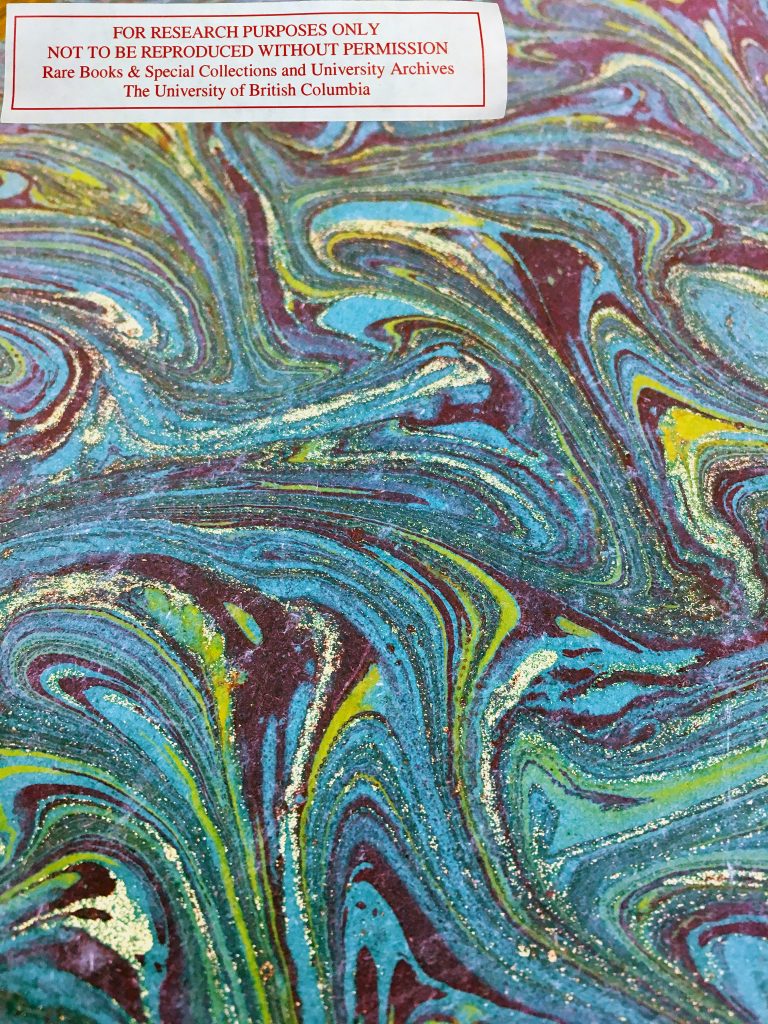
Marbled Pasteboard Book Cover Box of the 1956 Limited Editions Club edition of Dostoevsky’s The Idiot.
Marbled paper is incredibly mesmerizing to look at. Marbled paper may come in the form of end pages, book covers, and boxes that come with and hold books (including this edition of The Idiot). The marbled paper of this edition of The Idiot contains traces of gold, as visible in the above image. Just from an aesthetic standpoint and visual observation, it appears to enhance the overall quality and value of the book object.
Indeed, in my research I learned that the art of paper marbling belongs to a plethora of fine binding and fine printing techniques. As Andre Chevalier writes,
“Most of the collectors and trade professionals simply do not have enough knowledge about marbled paper to justify paying a premium for it. In fact, the differentiation between marbled paper qualities and options is a task that is mostly reserved for the experts in the field which specializes in fine bindings and fine printing.”
Although paper marbling is said to have originated in Turkey, Persia and their adjacent regions, sources date paper marbling back to 12th-century China and Japan. These techniques were discovered by European travellers to Turkey and Persia in the 16th-century. The popularity of paper marbling rose in Europe during the 17th-century. The French were the first to produce marbled endpapers in books, serving the function of book decorations not unlike the function of wallpaper in an interior.
The first comprehensive study of 17th-century of European paper marbling was published in 1947 by Charles M. Adams, entitled “Some Notes on the Art of Marbling Paper in the Seventeenth Century”.
Check out this interesting video that reveals the process of paper marbling:
Further Reading:
- Andre Chevalier, “The Art of Book Marbling Decoration,” Rare Books Digest
- Marika Sandar, “The Arts of the Book in the Islamic World, 1600-1800,” Metropolitan Museum of Art
- Phoebe Jane Easton, Marbling: A History and a Bibliography (Los Angeles: Dawson’s Book Shop, 1983)
- Einen Miura, The Art of Marbled Paper: Marbled Patterns and How to Make Them (New York: Kodansha International, 1991)
- Richard J. Wolfe, Marbled Paper: Its History, Techniques, and Patterns : with Special Reference to the Relationship of Marbling to Bookbinding in Europe and the Western World (Pennsylvania, University of Pennsylvania Press, 1990)
